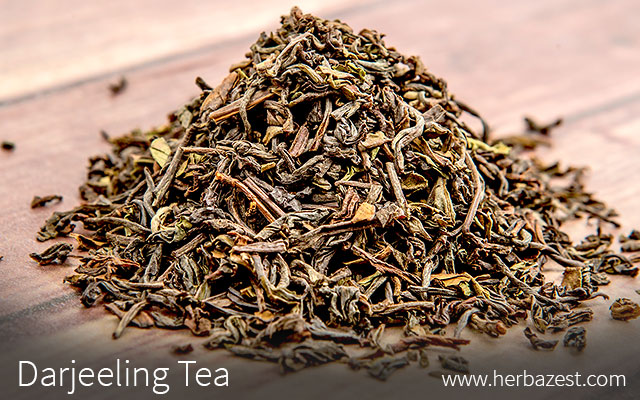This typically dark tea is considered the most expensive one in the world and it is commonly called the “champagne of teas,” which best describes its value and renown. Almost 80% of the 900,000 metric tons of Darjeeling tea's annual production in India is exported to other countries, including Japan and the United Kingdom. Its slight wine-like aroma has many enthusiasts around the world, ready to pay any price for this exquisite tea.
What is Darjeeling Tea?
This is an aromatic variety of tea produced from Camellia sinensis plants grown in the Indian Himalayas, in a region called Darjeeling. Its cultivation began in the mid-1800s and is now spread across 87 Indian estates on various altitudes. Darjeeling tea has been the first Indian product to achieve a Geographic Indication (GI) status, which ensures that this gourmet tea is available on the global market specifically under the name of the region it comes from.
This Indian variety of tea plant has a subtle flavor, with fruity and floral aromas and, depending on the processing and the temperature Darjeeling leaves are subjected, it is transformed into other types of tea, such as Darjeeling black tea, Darjeeling green tea, and Darjeeling white tea, each of them adding their own character and concentration of medicinal compounds.
Benefits of Darjeeling Tea
The health benefits of Darjeeling tea vary depending on the type of tea it is transformed into. It is abundant in polyphenols, which are powerful anti-oxidants associated with lowering cholesterol, decreasing the risk of heart disease, and strengthening bones.
Darjeeling tea has also been found to reduce plaque formation in the mouth, reducing the risk of tooth decay. It has also been shown to aid relaxation and reduce stress, mainly due to the presence of an amino acid called L-Theanine.
How to Make Darjeeling Tea
Darjeeling tea leaves are brewed as any other loose leaf tea or tea bag, stepping it in water at 200°F (93°C) for two to five minutes. The most commonly used water to leaf ratio is eight oz. (240 mL) of water for two tablespoons, or teabags. Some people prefer to have their Darjeeling tea with milk or a dairy-free substitute.
Where to Buy Darjeeling Tea
Although buying Darjeeling tea locally might be challenging in certain regions, it is generally available in most supermarkets and specialty tea stores, as well as numerous online sellers. Several brands use other tea blends and sell them as Darjeeling tea, so it is important to make sure that the GI status is present on the box.
There are four grades of Darjeeling tea, dictated by the quality and size of the leaves: whole leaf, broken leaf, fannings, and dust. These grades differ not only in their price, but also in their steeping time. Moreover, the cost often varies based on the harvesting season, called “tea flush”, which produces distinctive flavor features.
Tea connoisseurs claim that drinking darjeeling tea from a glass or ceramic tea pot improves the overall experience.
Sources
- Darjeeling: The Colorful History and Precarious Fate of the World's Greatest Tea
- Plant Molecular Biology, Understanding Darjeeling tea flavour on a molecular basis, 2012
- Journal of Agricultural and Food Chemistry, Aroma Composition of Oolong Tea and Black Tea by Brewed Extraction Method and Characterizing Compounds of Darjeeling Tea Aroma, 1995




